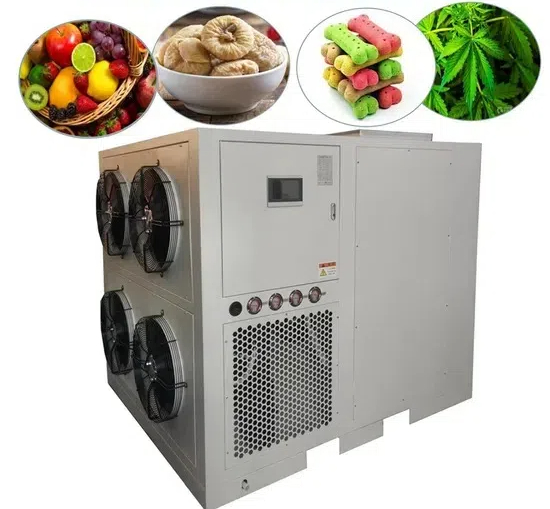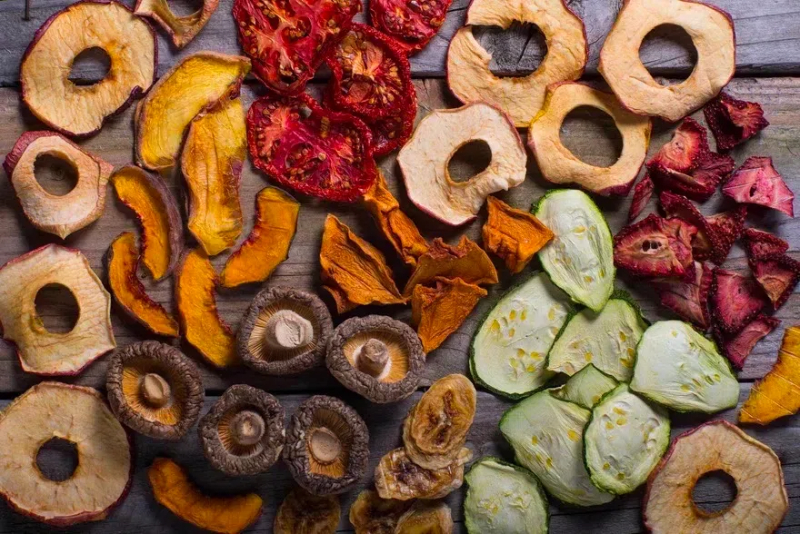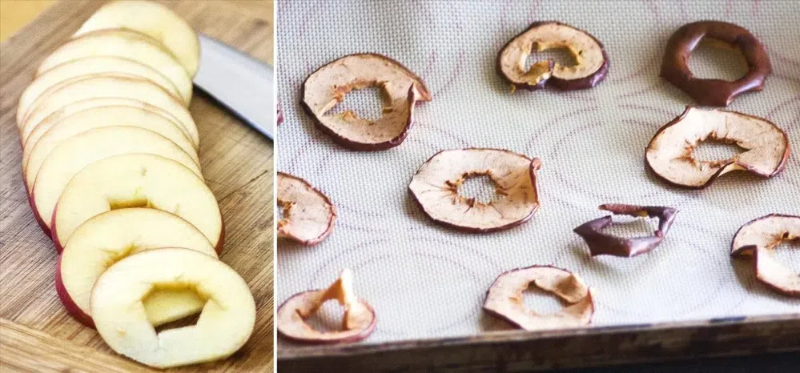
Content Menu
● How Does a Dehydrator Work?
● Benefits of Using a Food Dehydrator
● Common Foods to Dehydrate
● The Dehydration Process
● Practical Applications
● Nutritional Value Retention
● Common Mistakes When Using a Food Dehydrator
● Conclusion
● FAQ
>> 1. What types of foods can I dehydrate?
>> 2. How long does it take to dehydrate food?
>> 3. Can I dehydrate cooked foods?
>> 4. Do I need to pre-treat fruits before dehydration?
>> 5. How should I store dehydrated foods?
● Citations:
Food dehydration is an ancient preservation method that has gained renewed popularity in modern kitchens. A food dehydrator is a specialized appliance designed to remove moisture from various food items, extending their shelf life while retaining nutritional value. This article will explore the mechanics of food dehydrators, the benefits they offer, and practical applications for both home cooks and commercial operations.

How Does a Dehydrator Work?
A food dehydrator operates by utilizing heat and airflow to eliminate moisture from food. The process involves several key components:
- Heat Source: The dehydrator contains a built-in heating element that raises the temperature inside the unit. Typically, temperatures range from 95°F to 165°F (35°C to 74°C), depending on the type of food being dried.
- Airflow: A fan circulates warm air throughout the dehydrator, ensuring even drying. This airflow is crucial for preventing spoilage and maintaining the food's nutritional integrity.
- Trays and Racks: Food is placed on trays or racks that allow air to circulate freely around it. This design promotes uniform dehydration.
- Temperature Control: Many modern dehydrators come with adjustable temperature settings and timers, allowing users to customize the drying process based on specific food types.
Benefits of Using a Food Dehydrator
Using a food dehydrator offers numerous advantages:
- Preservation of Nutrients: Dehydration retains most vitamins and minerals in fruits and vegetables better than other preservation methods like canning or freezing. Research indicates that dehydration results in only a 3-5% nutrient loss, compared to 40-60% for freezing and 60-80% for canning[1][14].
- Extended Shelf Life: Dried foods can last several months to years when stored properly, making them ideal for long-term storage. Properly stored dehydrated foods can maintain their quality for up to five years[14].
- Cost-Effective: Dehydrating your own food can save money compared to purchasing pre-packaged dried goods. It allows you to buy in bulk and preserve excess produce, reducing waste.
- Healthy Snack Options: Dehydrated foods are often healthier than their processed counterparts, as they contain no added preservatives or artificial ingredients. They can be enjoyed as snacks or incorporated into meals.
- Space-Saving Storage: Dried foods take up significantly less space than fresh or frozen alternatives, making pantry organization easier.
- Enhanced Flavor Concentration: The dehydration process intensifies flavors, providing a more satisfying snacking experience. For instance, dried strawberries are sweeter than fresh ones due to the removal of water content.

Common Foods to Dehydrate
A wide variety of foods can be effectively dehydrated:
- Fruits: Apples, bananas, strawberries, and mangoes are popular choices. Dried fruits make for nutritious snacks and can be used in baking or as toppings for cereals.
- Vegetables: Carrots, bell peppers, tomatoes, and herbs like basil and oregano can be dried for later use in cooking. Dehydrated vegetables retain their fiber content, which is beneficial for digestion[1][9].
- Meats: Jerky is a well-known product made by dehydrating seasoned meat. Proper cooking before dehydration is essential to eliminate harmful bacteria.
- Grains and Legumes: Cooked grains can also be dehydrated for quick meal preparation later on. This method is especially useful for hikers looking for lightweight meal options.
The Dehydration Process
The dehydration process generally involves the following steps:
1. Preparation: Wash and slice the food into uniform pieces to ensure even drying. For fruits like apples or bananas, soaking in a lemon juice solution can prevent browning.
2. Loading the Dehydrator: Arrange the prepared food on the trays without overlapping to allow proper airflow.
3. Setting Temperature and Time: Adjust the dehydrator's settings according to the type of food being dried. Higher moisture foods like fruits typically require higher temperatures (around 135°F), while herbs should be dried at lower temperatures (around 95°F).
4. Monitoring: Check periodically for doneness. Most foods will take between four to twelve hours to dehydrate fully.
5. Cooling and Storage: Once dried, let the food cool before storing it in airtight containers or vacuum-sealed bags to prolong shelf life.
Practical Applications
Food dehydrators are not just for home use; they are also valuable in commercial settings:
- Restaurants can use dehydrators to create unique garnishes or add concentrated flavors to dishes.
- Caterers may prepare dehydrated meals for events where fresh ingredients are impractical.
- Outdoor enthusiasts, such as hikers and campers, benefit from lightweight dehydrated meals that are easy to pack and prepare on the go.
Nutritional Value Retention
One of the most significant advantages of using a food dehydrator is its ability to retain nutritional value. While some vitamins may degrade during dehydration—especially heat-sensitive ones like vitamin C—most nutrients remain intact[1][9]. For example:
| Nutrient | Fresh Fruits | Dried Fruits |
| Calories | Lower | Higher |
| Fiber | Present | Concentrated |
| Vitamins | Some lost | Mostly retained |
This table illustrates how dehydration affects nutrient density; while calories increase per ounce due to water loss, fiber content remains stable or even increases due to concentration[1][14].
Common Mistakes When Using a Food Dehydrator
While using a food dehydrator can be straightforward, there are common pitfalls that users should avoid:
- Skipping Pre-Treatment: Certain fruits benefit from pre-treatment methods like blanching or soaking in lemon juice to prevent discoloration and enhance flavor[5][19].
- Overloading Trays: Overcrowding trays can hinder air circulation, resulting in uneven drying[5][18].
- Inconsistent Slicing: Cutting food into uneven sizes leads to inconsistent drying times; smaller pieces may dry out too quickly while larger ones may remain moist[5][18].
- Ignoring Temperature Settings: Using incorrect temperature settings can result in improperly dried food; too high temperatures may cook the food instead of drying it[5][19].
Conclusion
Food dehydrators are versatile kitchen appliances that extend the shelf life of various foods while preserving their nutritional value. By removing moisture through controlled heat and airflow, these devices allow users to create healthy snacks, reduce waste, and save money. Whether for personal use or commercial applications, investing in a food dehydrator can enhance culinary creativity and sustainability while providing numerous health benefits.

FAQ
1. What types of foods can I dehydrate?
You can dehydrate fruits, vegetables, meats, herbs, grains, and even prepared meals like soups or stews.
2. How long does it take to dehydrate food?
Dehydration times vary based on the type of food but generally range from four to twelve hours.
3. Can I dehydrate cooked foods?
Yes, cooked foods can be dehydrated; however, ensure they cool down before placing them in the dehydrator.
4. Do I need to pre-treat fruits before dehydration?
Pre-treating fruits with lemon juice or ascorbic acid helps prevent browning during dehydration.
5. How should I store dehydrated foods?
Store dehydrated foods in airtight containers or vacuum-sealed bags in a cool, dark place for optimal shelf life.
Citations:
[1] https://www.webmd.com/diet/dehydrating-food-good-for-you
[2] https://www.youtube.com/watch?v=lEUA2t2XD5M
[3] https://www.rei.com/learn/expert-advice/how-to-dehydrate-food.html
[4] https://foodassets.com/info/dehydrated-food-versus.html
[5] https://crownful.com/blogs/tips/mistakes-to-avoid-when-you-are-using-dehydrator
[6] https://www.bestbuy.com/discover-learn/10-reasons-to-buy-a-food-dehydrator/pcmcat1634332391134
[7] https://www.osbheatpump.com/news/how-to-use-a-food-dehydrator-10-useful-tips-for-beginners-and-advanced-users/
[8] https://www.lowes.com/n/how-to/how-to-dehydrate-food
[9] https://www.kencko.com/blog/the-goods/does-dehydrated-food-and-vegetables-lose-nutritional-value
[10] https://www.webstaurantstore.com/guide/741/food-dehydrators-buying-guide.html
[11] https://www.ballmasonjars.com/step-step-dehydrating.html
[12] https://www.harmonyhousefoods.com/blog-nutritional-value-dehydrated-veggies
[13] https://www.youtube.com/watch?v=WIAtCgBc1Fc
[14] https://www.theseasonalhomestead.com/9-benefits-of-dehydrating-food-that-may-surprise-you/
[15] https://homesteadingfamily.com/preservation-101-intro-to-dehydrating-food/
[16] https://foodrevolution.org/blog/how-to-dehydrate-food-guide/
[17] https://silva-intl.com/blog/dried-and-delicious-the-health-benefits-of-dehydrated-foods
[18] https://www.tastingtable.com/1671930/mistakes-avoid-dehydrator/
[19] https://www.goodhousekeeping.com/appliances/a31904157/what-is-a-dehydrator/
[20] https://learn.eartheasy.com/guides/a-beginners-guide-to-dehydrating-food/
[21] https://www.backpackingchef.com/dehydrating-food.html
[22] https://www.pinterest.com/pin/common-mistakes-to-avoid-when-using-a-food-dehydrator-in-2024--945122671795520497/
[23] https://www.healthline.com/nutrition/dehydrated-food
[24] https://www.breville.com/content/breville/us/en/blog/cooking/how-to-use-a-dehydrator/_jcr_content/root/container_741553154/container/image.coreimg.85.1200.jpeg/1718622778417/how-to-use-dehydrator.jpeg?sa=X&ved=2ahUKEwjEyeuUjeqKAxXRUkEAHaLQIYcQ_B16BAgEEAI
[25] https://cdn.shopify.com/s/files/1/0382/1836/7107/files/Sahara-Explore_parallax.jpg?v=1709063571&sa=X&ved=2ahUKEwi5lPLkiuqKAxVzJNAFHZ02EAUQ_B16BAgEEAI
[26] https://www.allrecipes.com/article/how-to-use-a-food-dehydrator/
[27] https://community.waring.com/blog/p/13or1/the-remarkable-benefits-of-adding-a-food-dehydrator-to-your-kitchen-arsenal
[28] https://www.freshtimefoods.com/post/dehydrating-tips-common-mistakes-to-avoid
[29] https://www.freshoffthegrid.com/dehydrating-food/











